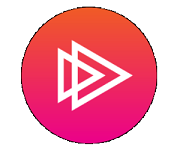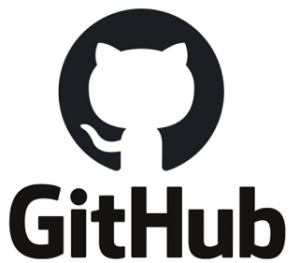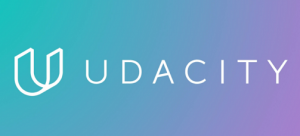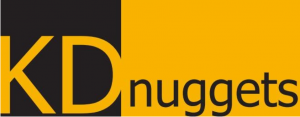Wie kann man sich zum/r Data Scientist ausbilden lassen?
Anzeige
Das allgegenwärtige Internet und die Digitalisierung haben heutzutage viele Veränderungen in den Geschäften überall auf der Welt mit sich gebracht. Aus diesem Grund wird Data Science immer wichtiger.
In der Data Science werden große Datenmengen an Informationen aus allen Arten von Quellen gesammelt, sowohl aus strukturierten als auch aus unstrukturierten Daten. Dazu werden Techniken und Theorien aus verschiedenen Bereichen der Statistik, der Informationswissenschaft, der Mathematik und der Informatik verwendet.
Datenexperten und -expertinnen, d. h. Data Scientists, beschäftigen sich genau mit dieser Arbeit. Wenn Du Data Scientist werden möchten, kannst Du eine große Karriere in der Data Science beginnen, indem Du Dich für eine beliebige geeignete Weiterbildung einschreibst, der Deinem Talent, Deinen Interessen und Deinen Fähigkeiten in einigen der wichtigsten Data-Science-Kurse entspricht.
Was machen Data Scientists?
Zunächst einmal ist es wichtig zu verstehen, was man eigentlich unter dem Begriff „Data Scientist” versteht. Data Scientist ist lediglich ein neuer Beruf, der in vielen Artikeln häufig zusammen mit dem der Data Analysts beschrieben wird, weil die erforderlichen Grundfertigkeiten recht ähnlich sind. Vor allem müssen Data Scientists die Fähigkeit haben, Daten aus MySQL-Datenbanken zu extrahieren, Pivot-Tabellen in Excel zu verwalten, Datenbankansichten zu erstellen und Analytics zu verwalten.
Data Scientists werden viele Stellen in Unternehmen angeboten, die mit der zunehmenden Verfügbarkeit von Daten konfrontiert sind und Personen brauchen, die ihnen bei der Entwicklung der Infrastruktur helfen, die sie zur Verwaltung der Daten benötigen. Oft handelt es sich um Unternehmen, die ihre ersten Schritte in diesem Bereich machen. Dafür benötigen sie eine Person mit grundlegenden Fähigkeiten in der Softwaretechnik, um den gesamten Prozess voranzutreiben.
Dann gibt es stark datenorientierte Unternehmen, für diejenigen Daten sozusagen Rohprodukt und Rohstoff darstellen. In diesen Unternehmen werden Datenanalyse und maschinelles Lernen recht intensiv betrieben, wodurch Personen mit guten mathematischen, statistischen oder sogar physikalischen Fähigkeiten benötigt werden.
Es gibt auch Unternehmen, die keine Daten als Produkt haben, aber ihre Zukunft auf sie und ihre Sinne planen und abstimmen. Diese Unternehmen werden immer mehr und brauchen sowohl Data Scientists mit grundlegenden Fähigkeiten als auch Data Scientists mit speziellen Kenntnissen, von Visualisierung bis hin zu Machine Learning.
Kompetenzen der Data Scientists
Die Grundlagen sind zunächst für alle, die im Bereich der Data Science arbeiten, dieselben. Unabhängig von den Aufgaben, die Data Scientists zu erfüllen haben, muss man grundlegende Softwaretechnik beherrschen.
Selbstverständlich müssen Data Scientists mit Programmiersprachen wie R oder Python und mit Datenbanksprachen wie SQL umgehen können. Sie bedienen sich dann statistischer, grundlegender Fähigkeiten um zu bestimmen, welche Techniken für die zu erreichenden Ziele am besten geeignet sind.
Ebenso sind beim Umgang mit großen Datenmengen und in sogenannten „datengetriebenen” Kontexten Techniken und Methoden des maschinellen Lernens wichtig: KNN-Algorithmen (Nächste-Nachbarn-Klassifikation für Mustererkennung), Random Forests oder Ensemble Techniken kommen hier zum Einsatz.
Entscheidend ist, die für den jeweiligen Kontext am besten geeignete Technik unterscheiden zu können, und dies bevor man die verschiedenen Werkzeuge beherrscht.
Die lineare Algebra und die multivariate Berechnung sind auch unerlässlich. Sie bilden die Grundlage für viele der oben beschriebenen Fähigkeiten und können sich als nützlich erweisen, wenn das mit den Daten arbeitende Team beschließt, intern eigene Implementierungen zu entwickeln.
Eins ist noch entscheidend. In einer idealen Welt werden die Daten korrekt identifiziert, da sie vollständig und kohärent sind. In der realen Welt muss sich der Data Scientist mit unvollkommenen Daten auseinandersetzen, d. h. mit fehlenden Werten, Inkonsistenzen und unterschiedlichen Formatierungen. Hier kann man von Munging sprechen, d. h. von der Tätigkeit, die sogenannten Rohdaten in Daten umzuwandeln, die ein einheitliches Format haben und somit in den Prozess der Aufnahme und Analyse einbezogen werden können.
Wenn Daten als wesentlich für Geschäftsentscheidungen sind, reicht es nicht aus, eine Person zu haben, die sie verarbeiten, analysieren und aufnehmen kann. Die Visualisierung und Kommunikation von Daten ist ebenso zentral. Daten zu visualisieren und zu kommunizieren bedeutet, anderen die angewandten Techniken und die erzielten Ergebnisse zu beschreiben. Daher ist es wichtig zu wissen, wie man Visualisierungswerkzeuge wie ggplot oder D3.js verwendet.
Ausbildungsmöglichkeiten und Bootcamps, um Data Scientist zu werden
Kurz gesagt gibt es zwei gängige Wege, um Data Scientist zu werden.
- Auf der einen Seite kann man einen Universitätslehrgang absolvieren. Diese Art von Studiengang führt zu einem spezialisierten Abschluss, der nach einem dreijährigen Bachelorabschluss in Informatik, Mathematik oder Statistik absolviert werden kann. In den letzten Jahren wurden diese neuen Studiengänge an den europäischen Universitäten immer häufiger angeboten.
- Auf der anderen Seite kann man sich für eine Weiterbildung zum/r Data Scientist anmelden, zum Beispiel eine Weiterbildung von DataScientest. Als national und international anerkannte Ausbildungsorganisation bietet DataScientest eine Weiterbildung zum/r Data Scientist an, die sich an Personen mit einem Bachelorabschluss und Kenntnissen in Kommunikation wendet. Ihr großer Vorteil ist die persönliche Betreuung, die allen Teilnehmer und Teilnehmerinnen angeboten wird, sowie ein Fernstudium, das 85% individuelles Coaching und 15% Masterclasses umfasst. Alles läuft über eine sichere Plattform, damit jeder Teilnehmer und jede Teilnehmerin codieren, Daten erforschen usw. können.
Bei dieser DataScientest-Weiterbildung haben die Lernenden die Wahl zwischen einer weitgehenden Ausbildung (10 Stunden pro Woche) oder einer Bootcamp-Ausbildung (35 Stunden pro Woche).
Das am Ende des Kurses erworbene Zertifikat wird von der Pariser Universität La Sorbonne anerkannt.





 https://unsplash.com/collections/28744506/work?utm_source=unsplash&utm_medium=referral&utm_content=creditCopyText
https://unsplash.com/collections/28744506/work?utm_source=unsplash&utm_medium=referral&utm_content=creditCopyText




 Pluralsight remains an educational platform for learners through insights from instructor-led courses or online courses, which lay stress on basics and some straightforward scenarios. Courses taken online will require you to exert more effort to gain detailed insights, thus helping you in the longer run. Pluralsight introduces one to several video
Pluralsight remains an educational platform for learners through insights from instructor-led courses or online courses, which lay stress on basics and some straightforward scenarios. Courses taken online will require you to exert more effort to gain detailed insights, thus helping you in the longer run. Pluralsight introduces one to several video  The website, which is produced by Dr. Nathan Yau, Ph.D., offers insights from experts about how to present, analyse, and understand data. This comes with practical guides to illustrate the points with real-time examples. In addition, the site also offers book recommendations, as well as provides insights related to the field of data science.
The website, which is produced by Dr. Nathan Yau, Ph.D., offers insights from experts about how to present, analyse, and understand data. This comes with practical guides to illustrate the points with real-time examples. In addition, the site also offers book recommendations, as well as provides insights related to the field of data science.
 Kaggle is an online learning platform that would be quite beneficial for individuals who already have some knowledge related to data science. In addition, most of the micro-courses require the users to have some prior knowledge in
Kaggle is an online learning platform that would be quite beneficial for individuals who already have some knowledge related to data science. In addition, most of the micro-courses require the users to have some prior knowledge in 
 This is a platform that comprises sub-forums, or subreddits, each focused on a subject matter of interest. Under this, the R/datascience subreddit has been titled the data science community, which remains one of the larger subreddit pages related to data science. Various data science professionals discuss relevant topics in data science. The data science subreddit remains insightful for individuals seeking a community that can provide related technical advice in the field of data science.
This is a platform that comprises sub-forums, or subreddits, each focused on a subject matter of interest. Under this, the R/datascience subreddit has been titled the data science community, which remains one of the larger subreddit pages related to data science. Various data science professionals discuss relevant topics in data science. The data science subreddit remains insightful for individuals seeking a community that can provide related technical advice in the field of data science.

 Image Source: Pexels
Image Source: Pexels